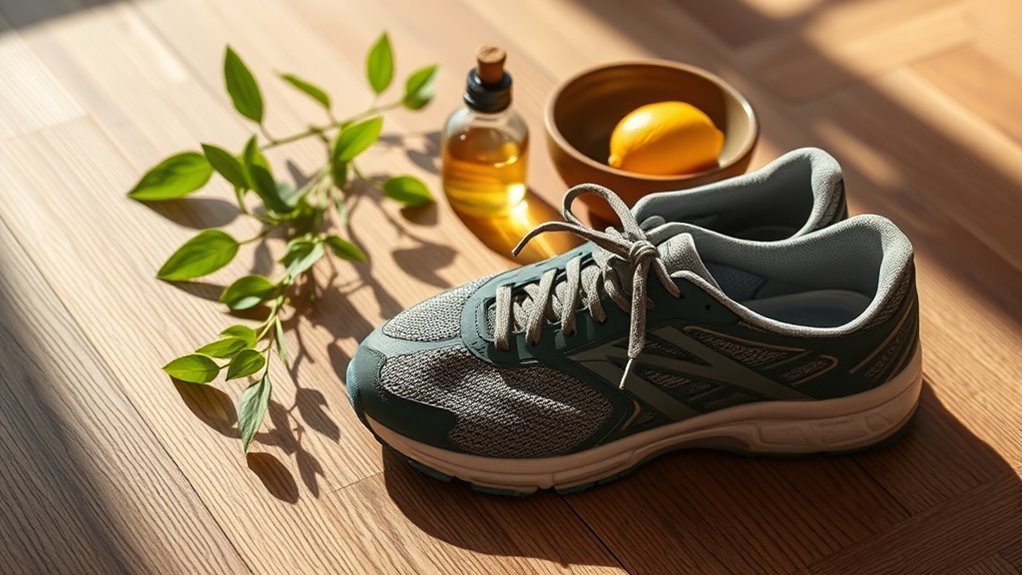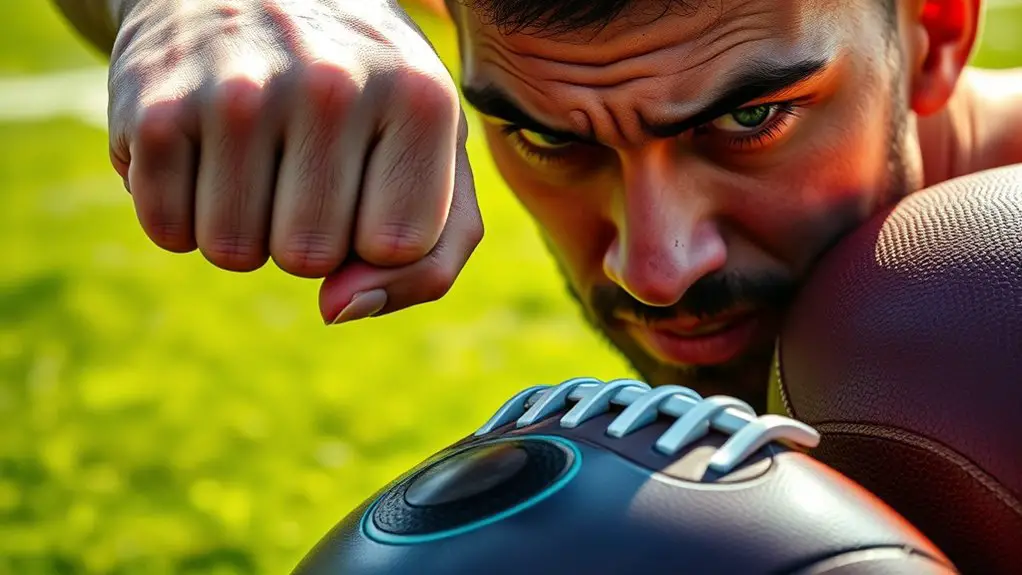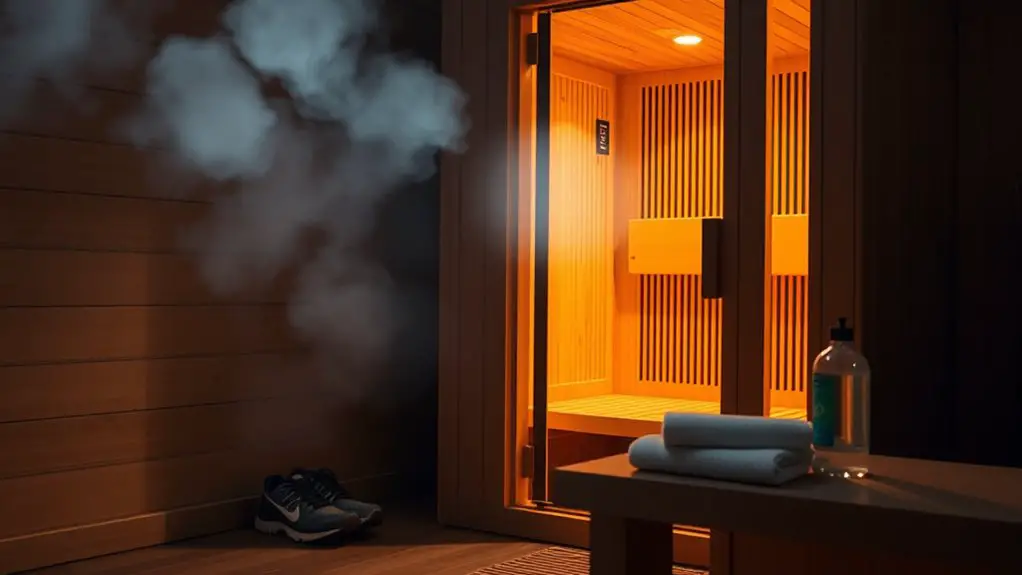If you’ve got athlete’s foot, start by using over-the-counter antifungal treatments like clotrimazole or miconazole for quick relief. Keep your feet clean and dry, especially between the toes. Soothing soaks with Epsom salt or apple cider vinegar can also help. Opt for breathable shoes and use antifungal powder to avoid recurrence. If your symptoms persist or worsen, don’t hesitate to consult a healthcare professional for further advice and treatment options. There’s more to learn about managing this condition effectively.
Understanding Athlete’s Foot: Causes and Symptoms
Although many people think of athlete’s foot as a minor nuisance, it’s actually a fungal infection that can cause significant discomfort. This pesky condition thrives in warm, damp environments, making your feet particularly vulnerable. You might notice symptoms like itching, burning, and skin irritation, especially between your toes. If you often find yourself in communal showers or locker rooms, you’re at an increased risk. The fungus can spread easily, so keeping your feet clean and dry is essential. Ignoring the signs can lead to more severe infections, making it vital to recognize and address athlete’s foot early. Embracing freedom means taking charge of your health, and understanding this condition is your first step toward relief.
Over-the-Counter Treatments for Athlete’s Foot
When it comes to treating athlete’s foot, there are several effective over-the-counter options available that can help you regain comfort quickly. You’ll want to focus on topical antifungals, which target those pesky fungal infections directly. Here are three popular treatments you can try:
- Clotrimazole – This cream disrupts the fungal cell membrane, aiding in quick relief.
- Miconazole – Available in both cream and powder, it’s great for keeping your feet dry while fighting infection.
- Terbinafine – A powerful option, this treatment works effectively against stubborn fungal infections.
Home Remedies to Alleviate Symptoms
If you prefer a more natural approach or want to complement your over-the-counter treatments, several home remedies can help alleviate the symptoms of athlete’s foot. One effective method is to create soothing soaks with warm water and Epsom salt or apple cider vinegar. Soaking your feet for about 15-20 minutes can reduce itching and inflammation. Additionally, you might find relief by applying tea tree oil, known for its antifungal properties; just dilute it with a carrier oil first. Another option is to use baking soda paste, which can help dry out the affected area. Remember to keep your feet dry and well-ventilated. These natural treatments can offer a gentle way to ease your discomfort and promote healing.
Preventive Measures to Avoid Recurrence
To prevent athlete’s foot from returning, it is essential to adopt some simple yet effective habits. By focusing on foot hygiene and moisture control, you can keep this pesky condition at bay. Here are three key practices to help you stay free:
- Keep your feet dry: After washing, thoroughly dry your feet, especially between the toes, to eliminate moisture that fungi love.
- Choose breathable footwear: Opt for shoes made from natural materials that allow air circulation, reducing sweat buildup.
- Use antifungal powders: Sprinkle antifungal powder in your shoes and on your feet to absorb moisture and inhibit fungal growth.
Embracing these habits will help you maintain healthy feet and enjoy your freedom without the worry of athlete’s foot returning.
When to Seek Medical Attention
How can you tell when it’s time to seek medical attention for athlete’s foot? If your symptoms aren’t improving after a week of over-the-counter treatments, it’s a good idea to consult a healthcare professional. Pay attention to signs of infection, like increased redness, swelling, or pus. If you notice fever or your foot feels warm to the touch, don’t hesitate to reach out for help. Additionally, if athlete’s foot starts spreading to other areas, like your toenails or groin, it’s time to get serious. Remember, you deserve to feel free from discomfort and pain. When complications arise, seeking prompt medical care can prevent further issues and get you back to your active lifestyle.
Frequently Asked Questions
Can Athlete’s Foot Be Contagious to Others?
Yes, athlete’s foot can be contagious. It spreads through direct contact with an infected person or by touching contaminated surfaces, like floors or shoes. To prevent transmission, make sure you wear flip-flops in communal areas, keep your feet dry, and avoid sharing personal items like towels or socks. By following these prevention tips, you can enjoy your freedom without worrying about passing on or catching athlete’s foot from others. Stay vigilant!
Is Athlete’s Foot More Common in Certain Seasons?
Yes, athlete’s foot is more common in certain seasons, especially during warmer, humid months. The weather impact plays a huge role in its seasonal prevalence, as fungi thrive in moist environments. If you’re often outdoors or in shared spaces during these times, you might find yourself more susceptible. To enjoy your freedom without worry, be mindful of foot hygiene and keep your feet dry, especially when temperatures rise.
Can I Still Exercise With Athlete’s Foot?
Yes, you can still exercise with athlete’s foot, but you might want to make some modifications. Focus on low-impact activities that don’t put pressure on your feet, like swimming or cycling. It’s important to keep your feet dry and clean, and explore treatment options like antifungal creams to speed up recovery. Just listen to your body; if it hurts, take a break. Staying active is great, but your feet need to heal too!
Are There Specific Footwear Recommendations for Prevention?
For prevention, you should opt for footwear made from breathable materials, like mesh or leather, to keep your feet cool and dry. Pair them with moisture-wicking socks that draw sweat away from your skin, reducing the risk of fungal growth. It’s all about creating a comfortable environment for your feet, so you can enjoy that freedom to move without worrying about discomfort or irritation. Stay active and keep your feet happy!
How Long Does Athlete’s Foot Typically Last?
Athlete’s foot can last anywhere from a few days to several weeks, depending on duration factors like severity and your treatment options. If you’re proactive with antifungal creams or sprays, you might find relief sooner. However, neglecting it can prolong the discomfort. It’s crucial to keep your feet clean and dry, as that helps speed up healing. So, take charge and tackle it head-on for a quicker recovery!




